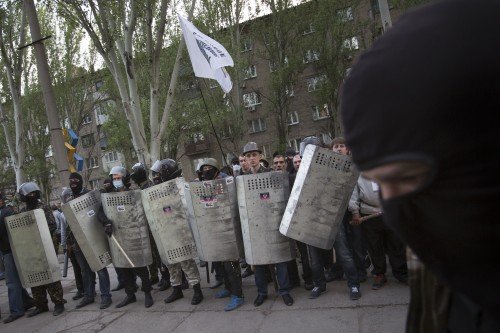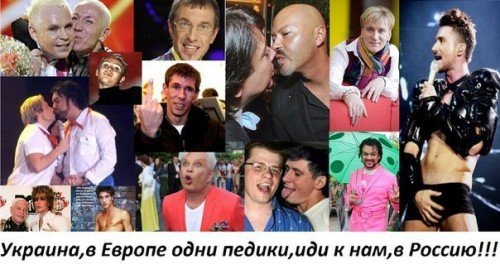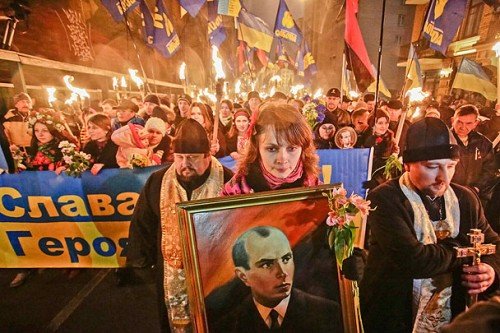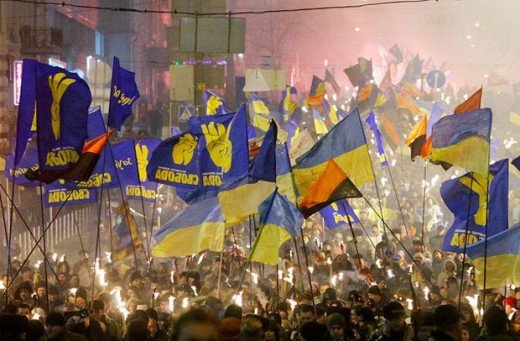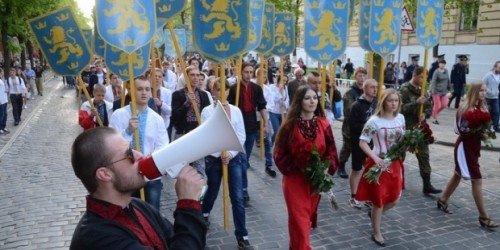The Ukrainian Conflict: A Ukrainian Nationalist View, Part 6: Svoboda, the Right Sector, and the Future of Ukrainian Nationalism
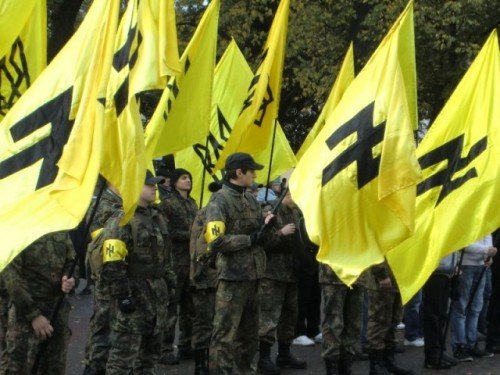
Part 1
Part 2
Part 3
Part 4
Part 5
Many Western nationalists ask: why are Ukrainian nationalists fighting only the mercenaries in eastern Ukraine, and not the current liberal Ukrainian government?
In general, there are two Ukrainian nationalist movements or organizations that exist at the moment: the Svoboda party and the Right Sector movement. Unfortunately, at the moment a huge amount of friction and mutual hate exists between them. However, thankfully, at the lowest levels people from both organizations work together very closely.
The Svoboda party has existed in different forms since around 1991. In 2012, it won around 10% of votes to the Ukrainian parliament. At the end of 2012, it won the “honor” of having two of its leaders listed by the Simon Wiesenthal center among the ten biggest “anti-Semites©”in the world. The program of the party is by far the most radical, anti-capitalist, anti-liberal program of any major organization that exists in Europe. It contains ideas such as banning usury, creating a Ukrainian computer operating system to be used on the territory of Ukraine instead of Microsoft Windows, essentially severely restricting any foreign news and information in Ukraine, banning homosexual propaganda, banning the advertisement of alcohol and cigarettes (with later attempts to ban them all together), forbidding anyone who is not Ukrainian by ethnicity to obtain Ukrainian citizenship, having the state promoting Christianity. There are also many points regarding nationalization of industry and business, returning Ukraine’s nuclear status, banning “Ukrainophobic” parties and many other great initiatives.
Svoboda’s program is a mix of every positive element of classical Strasserism and modern nationalism. During the 2012 elections, many voted for Svoboda hoping the party would fight the oligarchs — indeed, many old Communists even voted for the party due to the anti-capitalist economic program of the party. Read more

